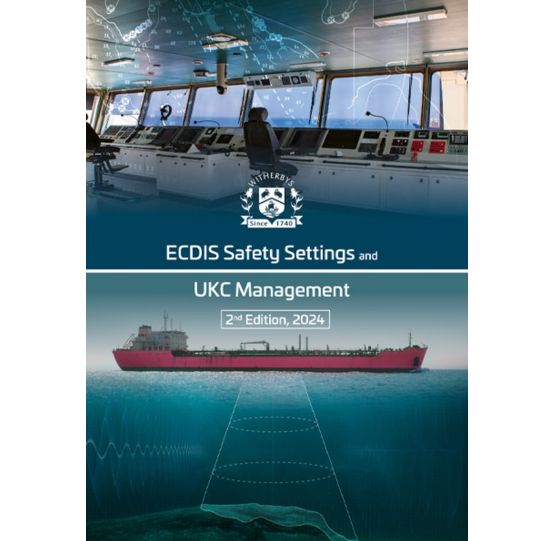ECDIS Safety Settings and UKC Management 2nd Edition, 2024
S$47.11
2024
This publication is a guide to ECDIS safety setting and under keel clearance (UKC) management. This booklet aims to provide a deeper insight into the principal Electronic Chart Display and Information Systems (ECDIS) safety settings and provide guidance to ensure they are understood by the ECDIS operator. It explains how underkeel clearance (UKC) should be calculated and effectively managed by the navigator.
In stock
Part One outlines how safety settings can be understood by the ECDIS operator. The essential ECDIS safety settings outlined include display, safety contour and depth, shallow and deep contour, isolated danger, detection area/safety frame and route check/cross track distance (XTD).
Part Two details how UKC should be calculated and effectively managed on board ships. Having a UKC plan allows the safety settings to be readily reviewed at any stage of the voyage.
Part Three includes worked examples to illustrate the limitations of ENCs in relation to safety settings. Each scenario demonstrates the various tidal calculations and their relationship to ECDIS safety settings.
Witherbys
Witherbys titles are developed using scripts developed by technical experts that are peer reviewed within work groups. Typically, they seek to improve understanding of the regulations, recommendations and guidelines issued by Industry.
Witherbys staff have significant expertise in the fields of navigation and hazardous cargoes as well as in the presentation of complex subjects in a graphic and easy to understand manner.
This booklet aims to provide a deeper insight into the principal Electronic Chart Display and Information Systems (ECDIS) safety settings and provide guidance to ensure they are understood by the ECDIS operator. It explains how underkeel clearance (UKC) should be calculated and effectively managed by the navigator.
The information contained here is not a substitute for correct adherence to company safety management system (SMS) requirements or the manufacturer's own operational manuals.
ECDIS safety settings must be configured correctly to ensure sufficient UKC, to ensure correct interpretation of the Electronic Navigational Charts (ENC) and to ensure that charted objects on the ENC are properly identified by the ECDIS as dangers or hazards to navigation.
The essential ECDIS safety settings to understand include:
Display settings
Safety Contour
Safety Depth
Shallow Contour
Deep Contour
Isolated Danger (symbols and attributes)
detection area/safety frame
route check/cross track distance (XTD).
Safety settings (particularly the Safety Depth and the Safety Contour input values) must be calculated correctly during the passage planning stage. Prior to sailing, the ECDIS operator must ensure that settings are entered and remain appropriate for the duration of the voyage.
Correct safety settings are essential for safe navigation. While underway, it is important to ensure that the ECDIS safety settings are verified as correct during every watch.
When configured correctly, the ECDIS will alarm when the ship approaches shallow waters, crosses the Safety Contour or approaches other hazards to navigation.
It is important to be aware that the main tool used to clearly distinguish between safe and unsafe water remains the 'no-go' areas, defined by the ECDIS operator and applied using the 'danger attribute' function.
When navigating within the Safety Contour, the ECDIS operator must ensure that Isolated Dangers are displayed.


